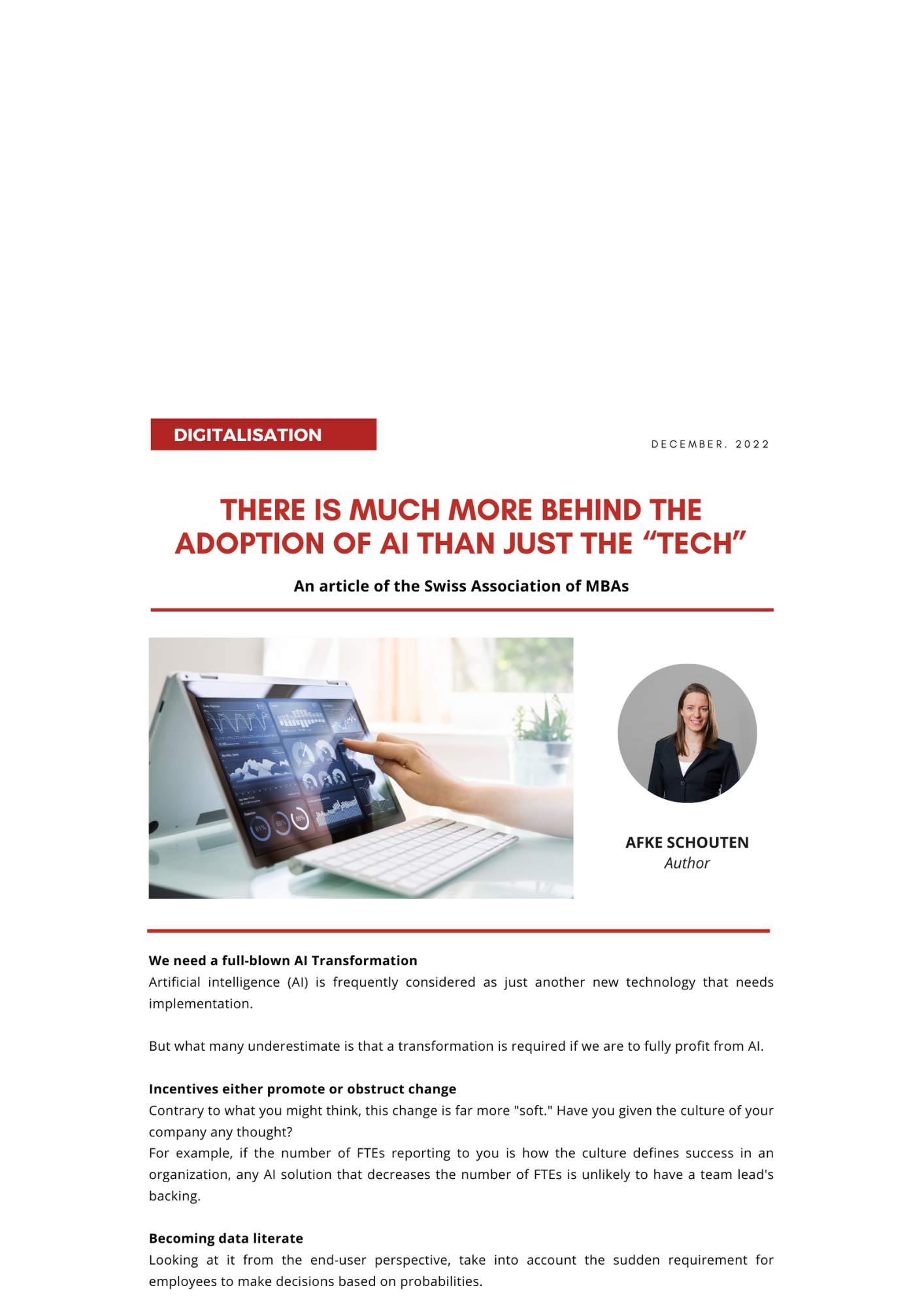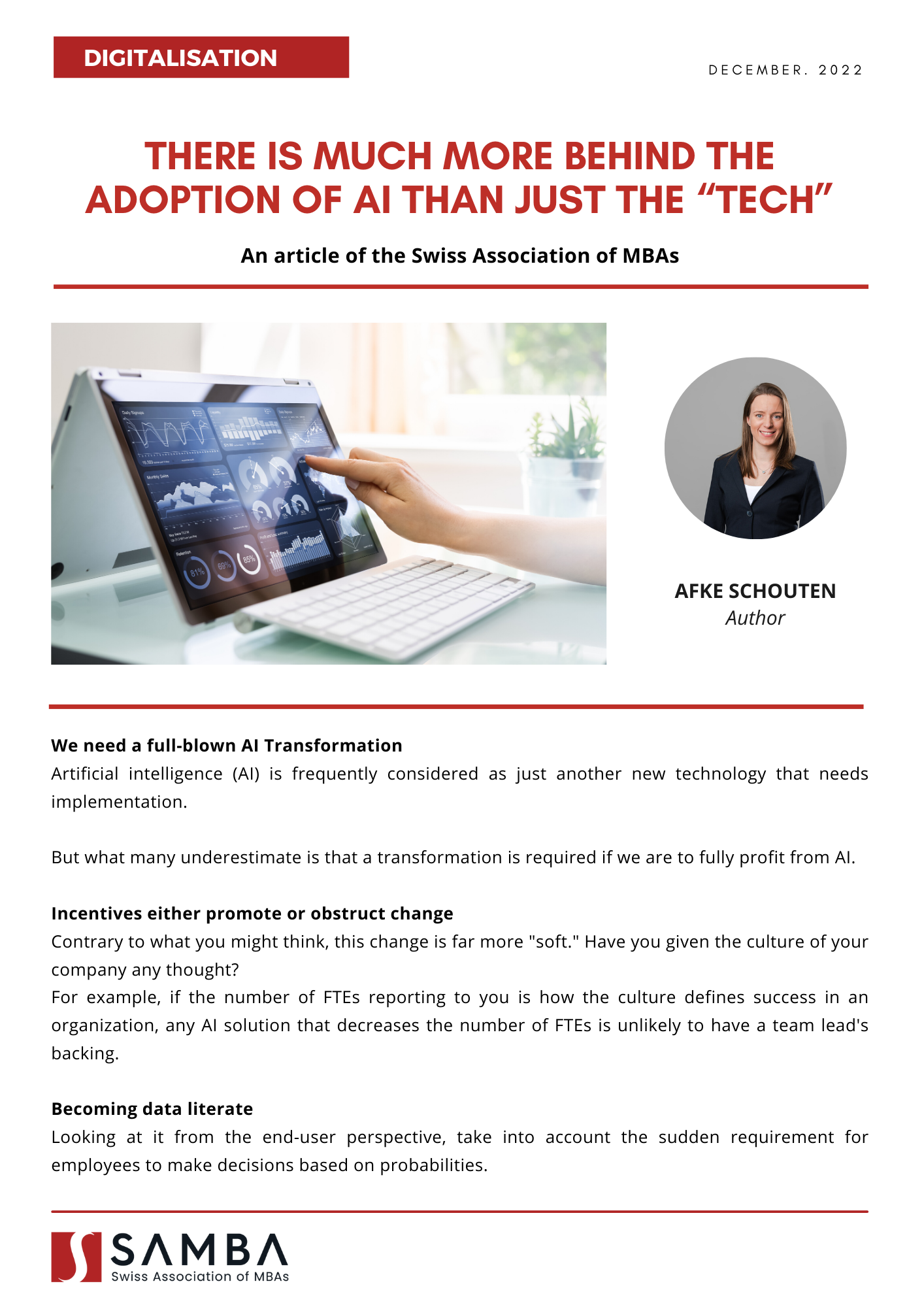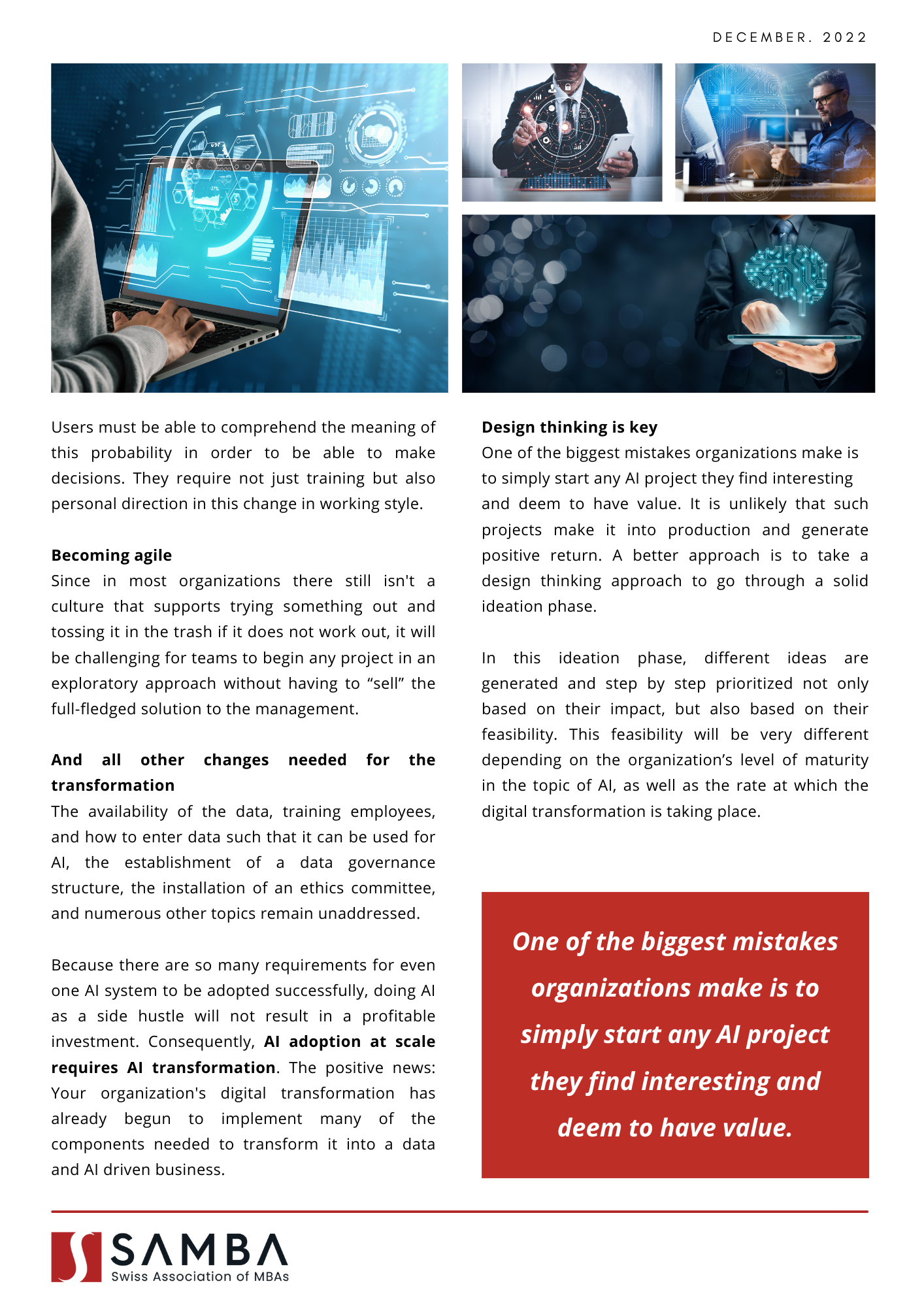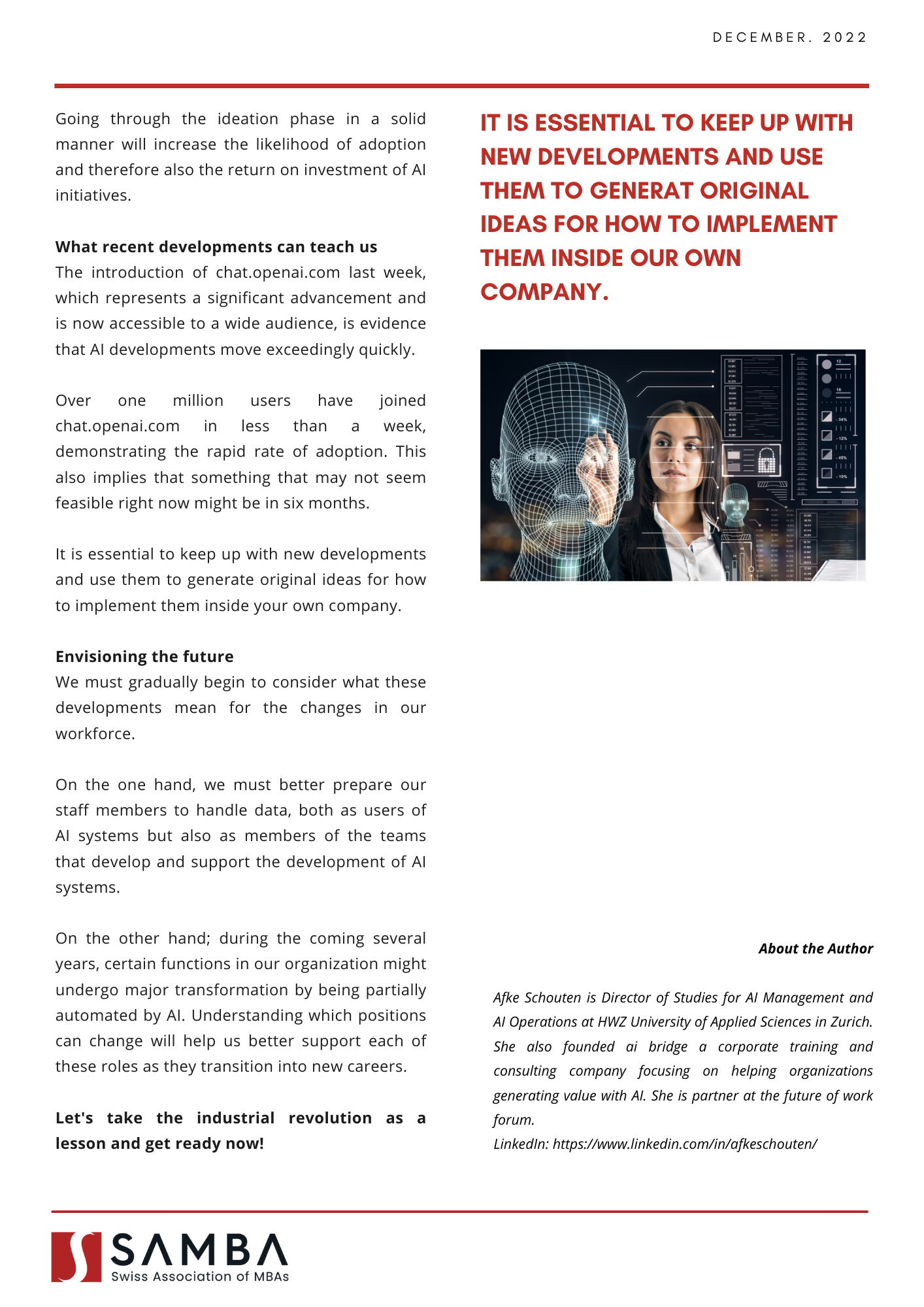
There is much more behind the adoption of AI than just the “Tech”
We need a full-blown AI Transformation
Artificial intelligence (AI) is frequently considered as just another new technology that needs implementation.
But what many underestimate is that a transformation is required if we are to fully profit from AI.
Incentives either promote or obstruct change
Contrary to what you might think, this change is far more "soft." Have you given the culture of your company any thought?
For example, if the number of FTEs reporting to you is how the culture defines success in an organization, any AI solution that decreases the number of FTEs is unlikely to have a team lead's backing.
Becoming data literate
Looking at it from the end-user perspective, take into account the sudden requirement for employees to make decisions based on probabilities.
Users must be able to comprehend the meaning of this probability in order to be able to make decisions. They require not just training but also personal direction in this change in working style.
Becoming agile
Since in most organizations there still isn't a culture that supports trying something out and tossing it in the trash if it does not work out, it will be challenging for teams to begin any project in an exploratory approach without having to “sell” the full-fledged solution to the management.
And all other changes needed for the transformation
The availability of the data, training employees, and how to enter data such that it can be used for AI, the establishment of a data governance structure, the installation of an ethics committee, and numerous other topics remain unaddressed.
Because there are so many requirements for even one AI system to be adopted successfully, doing AI as a side hustle will not result in a profitable investment. Consequently, AI adoption at scale requires AI transformation. the positive news: Your organization's digital transformation has already begun to implement many of the components needed to transform it into a data and AI driven business.
Design thinking is key
One of the biggest mistake organizations make is to simply start any AI project they find interesting and deem to have value. It is unlikely that such projects make it into production and generate a positive return. A better approach is to take a design thinking approach to go through a solid ideation phase.
In this ideation phase, different ideas are generated and step by step prioritized not only based on their impact, but also based on their feasibility. This feasibility will be very different depending on the organization’s level of maturity in the topic of AI, as well as the rate at which the digital transformation is taking place.
Going through the ideation phase in a solid manner will increase the likelihood of adoption and therefore also the return on investment of AI initiatives.
What recent developments can teach us
The introduction of chat.openai.com last week, which represents a significant advancement and is now accessible to a wide audience, is evidence that AI developments move exceedingly quickly.
Over one million users have joined chat.openai.com in less than a week, demonstrating the rapid rate of adoption. This also implies that something that may not seem feasible right now might be in six months.
It is essential to keep up with new developments and use them to generate original ideas for how to implement them inside your own company.
Envisioning the future
We must gradually begin to consider what these developments mean for the changes in our workforce.
On the one hand, we must better prepare our staff members to handle data, both as users of AI systems but also as members of the teams that develop and support the development of AI systems.
On the other hand; during the coming several years, certain functions in our organization might undergo major transformation by being partially automated by AI. Understanding which positions can change will help us better support each of these roles as they transition into new careers.
Let's take the industrial revolution as a lesson and get ready now!
About the Author
Afke Schouten is Director of Studies for AI Management and AI Operations at HWZ University of Applied Sciences in Zurich. She also founded ai bridge a corporate training and consulting company focusing on helping organizations generating value with AI. She is partner at the future of work forum.





